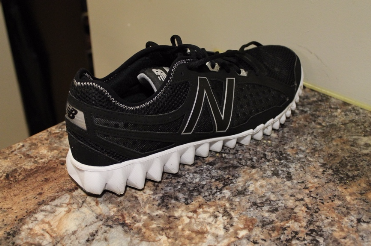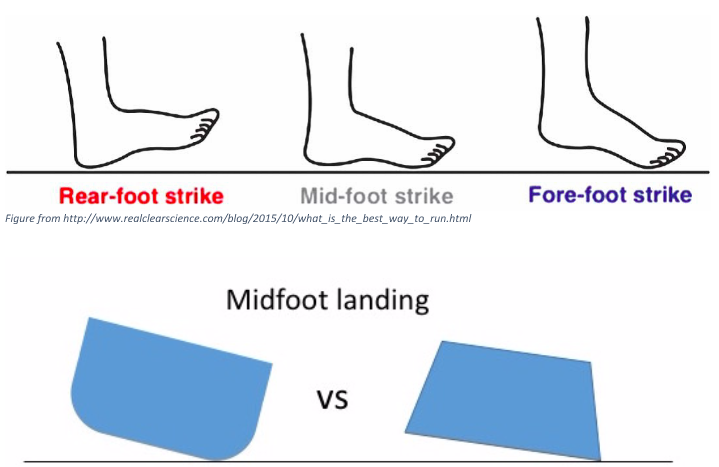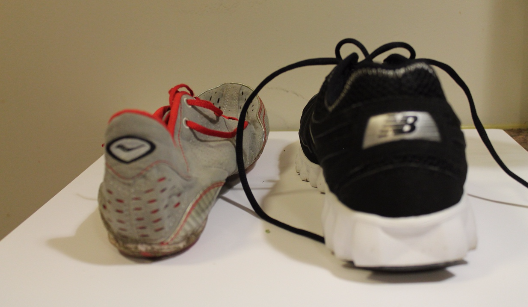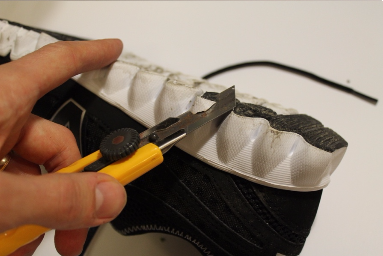I carved up my running shoes with a knife. Here’s what happened:

Our blogger Graydon is always getting to the bottom of his curiosity. This week, that meant taking a box cutter to his brand new shoes and carving them up to see if they would work better. Here’s what he found out:
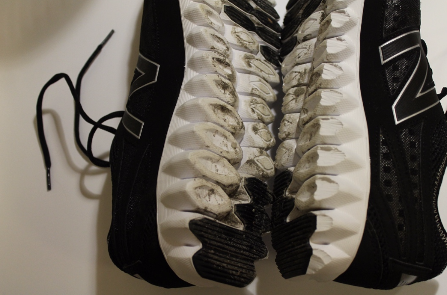
During the 1960s, Bill Bowerman famously used a waffle iron to create his first pair of Nike shoes. He wanted his Olympic athletes to have lightweight footwear with a textured rubber tread. Since these pioneering day, we may agree that the notion of manipulating one’s running gear to such extremes has since gone out of style. There’s a plethora of shoes in today’s stores. Especially when factoring in the minimalist shoe revolution, it appears we have enough variety already.
Maybe it’s because I wear size 13 shoes, but I when I walk into a store, I don’t see perfection. I see a collection of almost-but-not-quite-there designs. No one has all of the answers, including multi-billion dollar companies.
Since I’m not sponsored, I’m often looking for a good deal. I’m known for keeping shoes long after their expected lifetime, often running thousands of miles on a single pair. So if I see a shoe that’s close to the right fit, why not try to improve it?
Case in point: I picked up a pair of New Balance shoes on sale last week. Lightweight and flexible, they were almost what I wanted. Then, after running around the block, I discovered a problem: the spiky extensions conflicted with how the side of my foot naturally lands. In other words, the shoe is not properly built for midfoot pronation.
At moderate running paces, humans tend (or ought) to land on the outside of their foot. This is otherwise known as the ‘midfoot stance.’ By comparison, sprinters land on their forefoot, and joggers and walkers tend to land heel-first.
Having a sharp outside edge interferes with pronation. Note that I’m not picking on New Balance per se, as almost every shoe company may have similar design issues.
You can see a better picture of what I mean based the exaggerated images below.
My problem is not in the heel alone. The entire shoe is built in this pyramidal way. For a real-life comparison, consider my distance spikes for races spanning 1,500m to 10K. Here we see a curved bottom, while the New Balance shoes are square-ish at the bottom. I’m about to alter this fact.
My solution is to carve the edges using a box cutter. The foam structure of these shoes goes right to the core, so there is no risk of ‘deflating’ the shoes given the lack of air pockets (this is not true of all shoes, so beware). I ought to say
“don’t try this at home kids.” But please do try. Just cut safely away from your fingers and maybe practice on an old pair first.
At least my manipulation doesn’t require a waffle iron.
After systematically cutting off all the edges at a 45-degree angle, we see a shoe with more rounded corners, closer to the ideal for a lightweight trainer. It’s now built for two dimensions of rotation instead of just one (that is, side-to-side as well as front-to-back).
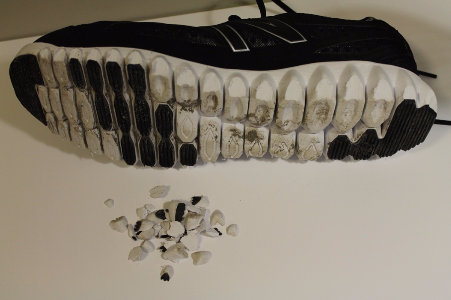
The final verdict came with a trial run (literally) to compare the cut and uncut shoes.
The result, admittedly, was subtle. Running on pavement, I feel a slight difference when landing. The edited shoe had a more rolling feel to it, and felt a less clunky. But full disclosure: if no one had told me these shoes were different, I may not have noticed. Then again, we should not expect a radical difference either. After all, these shoes are only marginally different.
I don’t normally carve up my shoes, but small experiments like this one help to better know my own running technique. And I do believe these changes improve my shoes for uneven trail running by strengthening my ankles ever-so-slightly.
For closing remarks, it might be interesting to hear from readers what ‘hacks’ you have performed on footwear. I’m all ears.
